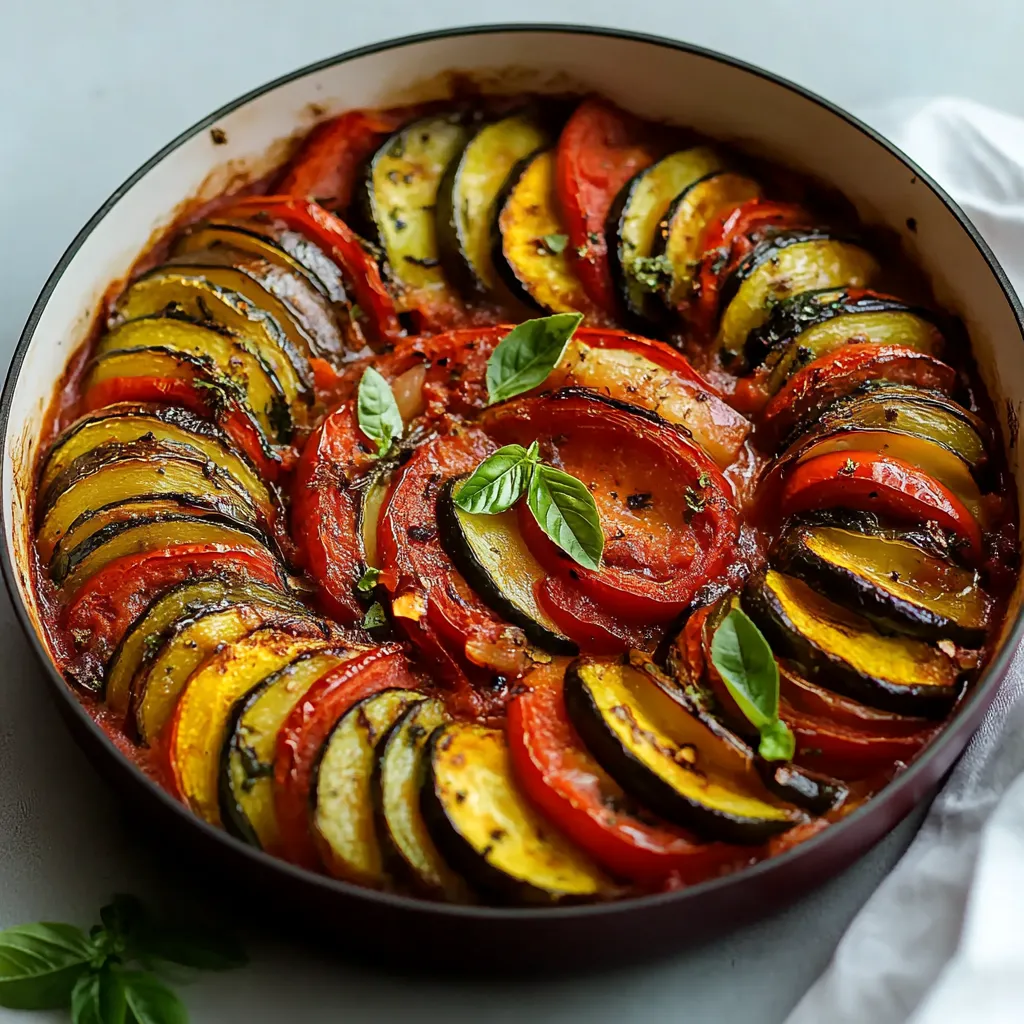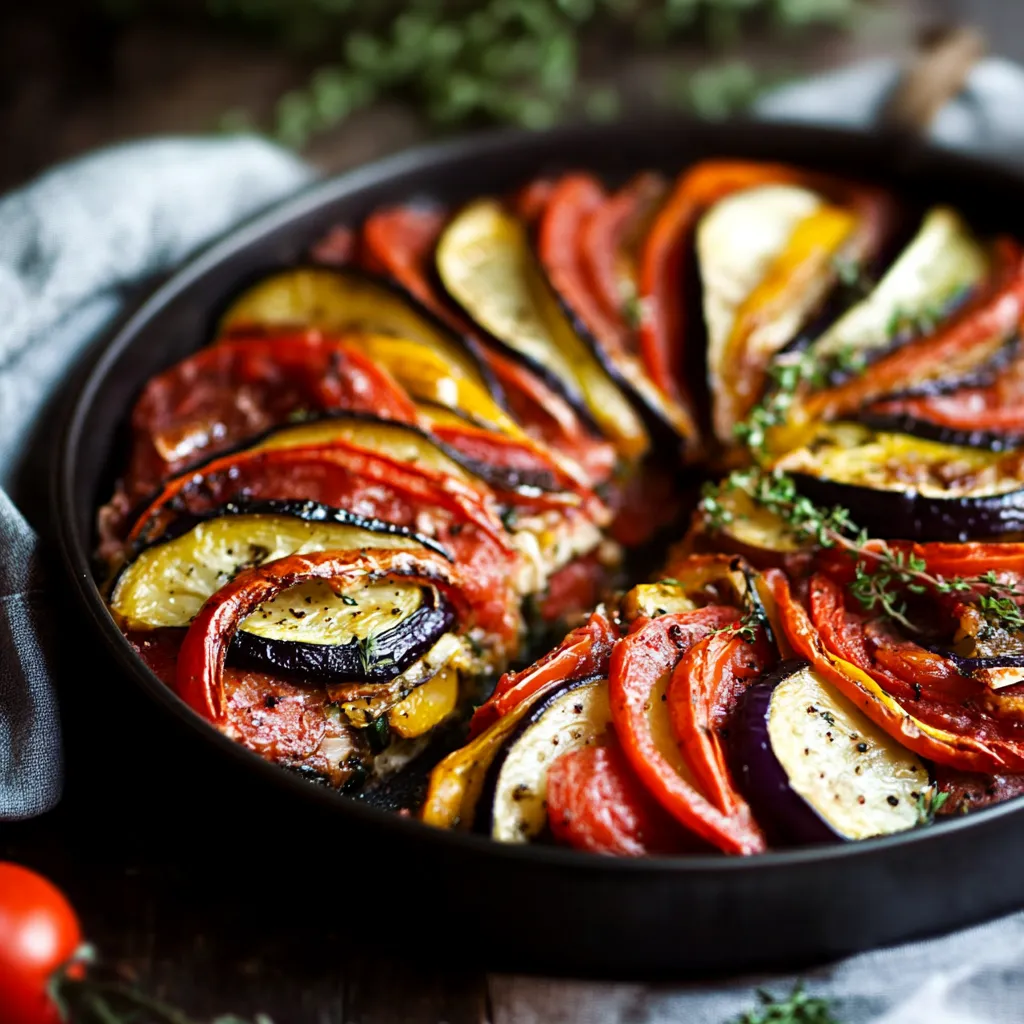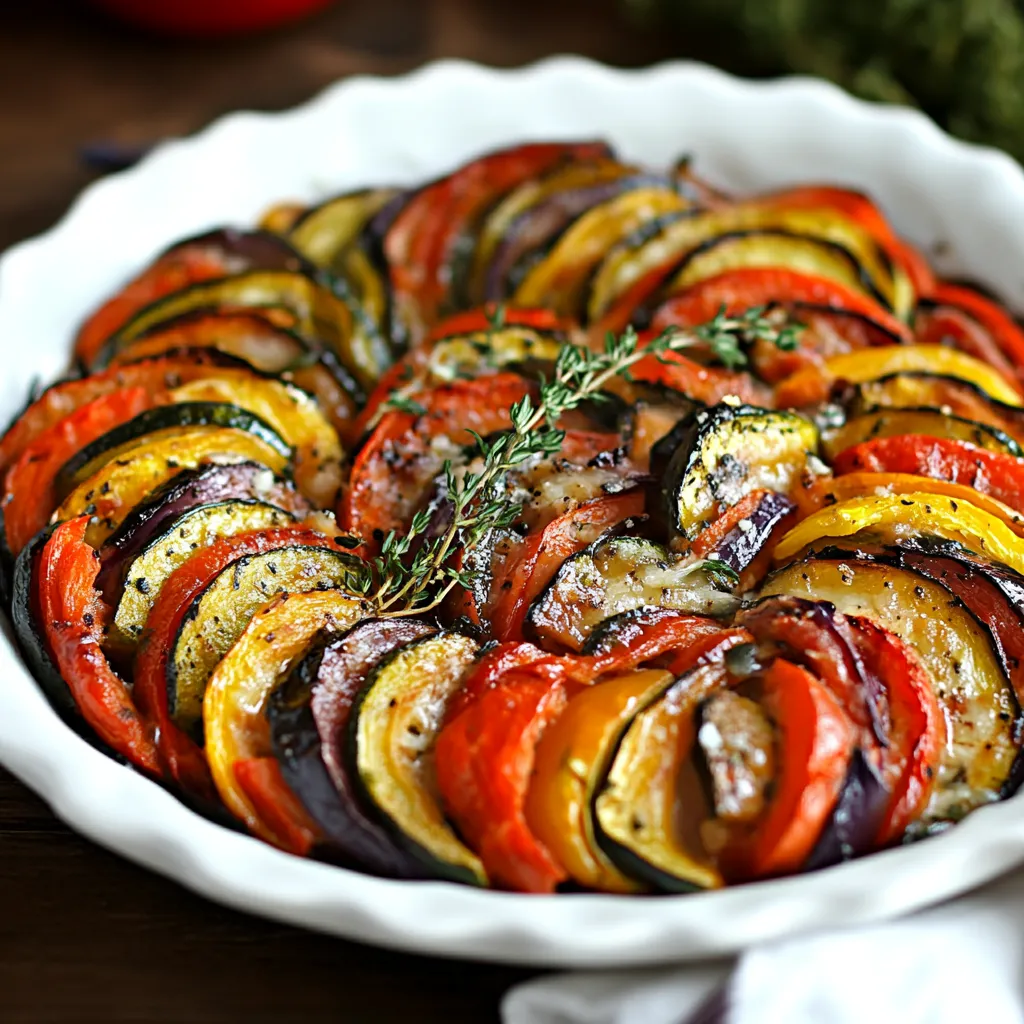 Pin it
Pin it
Summer veggies come together in this famous French dish where slow cooking and proper seasoning turn ordinary ingredients into something magical. This country stew from Provence lets eggplant, zucchini, peppers, and tomatoes shine at their summer best, keeping their individual character while blending into a rich, flavorful mix.
I stumbled upon real ratatouille during a trip around southern France. In a tiny Nice café, I watched an old cook carefully tending vegetables as they simmered. What I tasted was mind-blowing—familiar veggies turned into something deep and fulfilling. These days, my family knows summer's here when they spot the first batch of ratatouille on our dinner table.
What You'll Need
- Eggplant: Gives a substantial texture that soaks up olive oil and surrounding flavors.
- Zucchini: Brings a mild taste and soft feel that works against the eggplant.
- Bell peppers: Add a touch of sweetness and bright colors that balance everything out.
- Tomatoes: Supply the tangy kick and create the light sauce that brings all parts together.
- Onions: Build the flavor foundation with their natural sweetness.
- Garlic: Boosts the Mediterranean feel with strong, grounded flavors.
- Fresh herbs: Bay leaves, thyme and basil work together for herbal richness.
- Olive oil: Can't do without it for developing taste and carrying the Mediterranean spirit.
How To Make It
- Get Your Veggies Ready:
- Clean and cut eggplant into 1-inch chunks, throw some salt on them, and wait 30 minutes to pull out bitterness. Chop zucchini, peppers, tomatoes, and onions into similar sizes so they cook evenly. Chop garlic right before you need it.
- Start With Aromatics:
- Warm up ¼ cup olive oil in a big pot on medium. Cook onions with a bit of salt for 5-7 minutes until they turn clear. Toss in chopped garlic and cook another minute until you can smell it.
- Add Veggies One By One:
- Wash and dry your eggplant, then put it in the pot with extra olive oil. Let it cook 8-10 minutes until soft. Mix in peppers and cook 5 more minutes, then add zucchini and keep cooking another 5 minutes.
- Put In Tomatoes And Herbs:
- Add your chopped tomatoes, thyme, bay leaves, salt, and pepper. Mix gently, letting tomatoes release their juice to make a simple sauce.
- Cook It Slow:
- Turn heat to low, cover the pot, and let everything simmer for 30-40 minutes, stirring now and then. Veggies should get tender but still hold their shape.
- Let It Sit:
- Keep the pot covered and let everything rest at least 30 minutes before serving so flavors can mix better.
- Final Touches:
- Take out bay leaves and mix in fresh basil. Check if it needs more salt and pepper. Pour a little extra virgin olive oil on top for more richness.
- Temperature Choices:
- You can enjoy it hot, room temp, or cold - whatever you like best.
 Pin it
Pin it
When I first tried making ratatouille, things weren't quite right until I figured out I needed to cook each veggie at different times. Throwing everything in together made everything too mushy. A chef from Provence once told me, 'Each veggie needs to join the pot when it's ready to meet its friends.' This advice changed everything, and now I get perfectly cooked veggies that still have their own character.
Ways To Enjoy It
Try it over creamy polenta with Parmesan for a nice mix of soft textures.
Stuff ratatouille into empty tomatoes or peppers and bake them for a fancy starter.
Put a runny poached egg on warm ratatouille and grab some crusty bread on the side.
Different Takes
Check out the Nice version where you cook all veggies separately before mixing them for better texture.
Mix in olives, capers, and a splash of vinegar for a Sicilian twist.
Try adding smoky paprika and manchego cheese for a Spanish feel.
Keeping It Fresh
Store in the fridge in a sealed container for up to five days - it'll actually taste better as days go by.
You can freeze it for three months, but it might get a bit softer when thawed.
Use what's left to top pasta, spread on toast, or mix into morning eggs.
 Pin it
Pin it
This traditional French dish really shows off summer's best veggies. It taught me that good cooking can't be rushed—flavors need time to grow naturally. Whether you eat it warm with crusty bread or cold on a hot summer day, it always takes me back to Mediterranean meals where simple foods shine with a little care and attention.
Frequently Asked Questions
- → Should I remove the eggplant skin?
- It’s up to you! The skin adds color and texture, but if the eggplant is big and the peel feels tough, you might want to take it off for a softer result.
- → Can I cook it in advance?
- Totally! This dish actually tastes better after sitting for a day or two because the flavors meld. Just reheat gently or serve at room temperature.
- → How do I stop it from getting watery?
- If there’s too much liquid, uncover the pot during the last 10 minutes so it can evaporate. Using firm, ripe veggies also helps manage excess moisture.
- → What goes well with this dish?
- Enjoy it with crusty bread, spooned over rice, polenta, or pasta, or even topping it with a fried egg. It’s also excellent next to grilled meats or fish!
- → Can I freeze the leftovers?
- Yes, this freezes beautifully! Let it cool, then transfer to freezer containers. It’ll keep for about three months. Thaw overnight and warm up on the stove.
